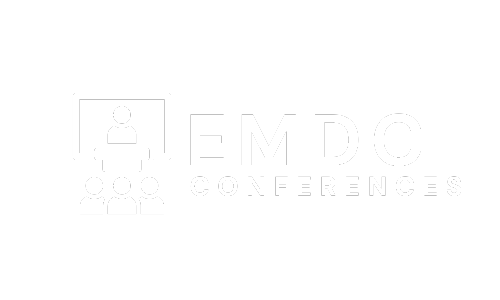EMDC History, Purpose, & Name
The Eurasia Media & Distribution Consultation (EMDC) began in 2010 as a multi-agency consultation that meets annually.
1st —Sept 2010, Germany, 130 people (32 organizations)
No pre-EMDC training (just 3.5 days of EMDC)
2nd—March/April 2012, Germany, 200 people (70 organizations)
3 Tracks of pre-EMDC training (75 participate in the training)
Video, Audio, Web
3rd—April 2013, Thailand, 224 people (81 organizations)
9 Tracks of pre-EMDC training (120 participants in the training)
Video 1, Video 2, Audio 1, Audio 2, Web Development, Orality/Storytelling,
Ethnoarts, Mobile Production (using only mobile), Mobile Applications
4th—April 2014, Thailand, 320 people (99 organizations)
11 Tracks of pre-EMDC training (194 participants in the training)
Added Tracks: Culturally Intelligent Media (Anthropology), Discovery Scripture Groups
5th—April 2015, Netherlands, 380 people (130 organizations)
15 Tracks of pre-EMDC training (201 participated in the Training)
Added Tracks: Becoming an On-Line Trainer, Animation, Research Methods for Effective Media and Communication, Digital Engagement including Archiving
6th—April 2016, Thailand, 450 people (138 organizations)
14 Tracks of pre-EMDC training (270 participated in the Training)
Added Tracks: Storyboarding; Scripture Engagement Games; Scripture Engagement and Trauma Healing
7th—April 2017, Netherlands, 420 people (146 organizations) (Over 30 registrants were denied visas)
15 Tracks of pre-EMDC training (270 participated in the Training)
Added Tracks: Culture Meets Scripture; Scripture Engagement; Film Dubbing.
8th—March 2018, Thailand , 725 people (193 organizations), 18 Tracks of pre-EMDC (490 people). Added Tracks: Using Bloom in Scripture Engagement; Creating eLearning Content and Curriculum; Added Korean Workers’ Summit (25 March).
9th—April 2019, Netherlands, 602 people (210 organizations), (Over 55 registrants were denied visas, representing many organizations). Added post-EMDC with total of 27 Tracks of pre-EMDC and post-EMDC Training (400+ people).
10th—30 March – 02 April, 2020, Thailand, pre-EMDC Training (25-28 March), and post-EMDC Training (03-06 April). EMDC 2020, expecting 900 people from 270 organizations, with 18 Training Tracks at pre-EMDC and 18 Training Tracks at post-EMDC, was cancelled due to COVID-19.
10th—June 2022, Netherlands, 251 people (94 organizations), residents of 45 countries attended but over 100 registrants were denied visas due to Covid restrictions, representing many organizations. This was a 4-day gathering with no training before or after.
EMDC Español—October, 2022, (1st), Mexico City, 178 people (70 ministries), 15 countries, 40 indigenous language communities, and 30 languages.
11th—May 2023, Thailand, with 15 Training and 16 Tracks before and after. We had 780 people from 227 organizations.
EMDC Español—November, 2023, (2nd), Colombia, 151 people (73 ministries), 20 countries, and 42 indigenous language communities.
12th—May 2024, Thailand, with 27 Training Tracks for pre and post EMDC. We had 685 people from 187 organizations.
13th—May 2025, Netherlands, 19-22 May 2025.
The section below explains the historical, original purpose and design of EMDC. EMDC has taken on a broader and more more international nature over the years.
Why a Eurasia-centered meeting?
- We have similar needs that the rest of the world does not have
- We have access considerations that many don’t have
- We have a similar situation with majority beliefs
- We have similar linguistic challenges
- We can keep travel closer than a world-wide conference
The four main goals of the EMDC are as follows:
- To provide a meeting place where those engaged in minority language work (whether in-country or displaced) can interact with communication and media specialists to develop media strategies, explore the use of ethno-arts, and assess and prioritize media products.
- To network existing regional media organizations with minority language teams for present or future partnerships on actual, doable projects.
- To help those with some material to be able to record, edit, mix, and finish their project in hands-on workshops (or at a minimum connect with those who will see them through to the end).
- To provide a venue where minority language workers can express their media-related needs, learn from one another in areas of methodology and strategy, and explore ways in which they might share resources.
What takes place?
- In addition to plenary sessions, workshops, and training, language-specific, country-specific, or ethnic group-specific working groups will be meeting. Specific ethnic groups will discuss language programs and language planning.
- EMDC is a multi-agency consultation that meets alternately in Asia and Europe. Minority language workers in the greater Eurasia region meet with media specialists (radio, TV, Internet, mobile, social media), IT Technicians, recording specialists, graphic artists, digital publishers, and specialists in Orality and Ethno-Arts.
Why the name EMDC?
Eurasia (broadly defined) is our primary focus. Since we meet in Asia every other year, we have a large Asian input. We have also welcomed Europe-focused and Africa-focused workers as well who find their needs met at EMDC.
Media is one of the core elements, but that does not only mean typical media forms. Stories, music, art, and new media are all forms of media in our opinion.
Distribution is important. Since Scripture is our main distributed product, we try to find creative ways to distributed it, and that includes, Discovery Study Groups, Trauma Healing teaching, games, and other creative forms.
Consultation. We do not see the EMDC as a conference. It is a consultation of many mini-conferences. We have Affinity Groups so that those with particular interests can find each other: video, audio, web sites, ethnoarts, orality, new media, mobile, research, animation, study groups, trauma healing, etc. We all share the common goal of distributing Scripture and scriptural ideas in creative ways to minority people groups.

